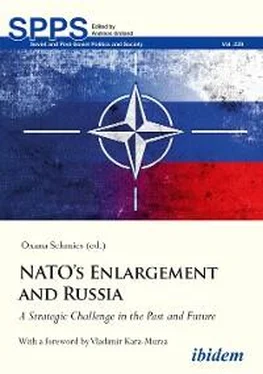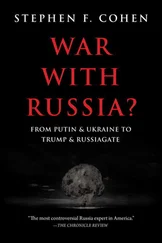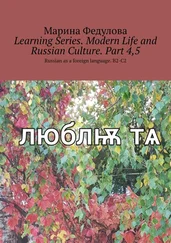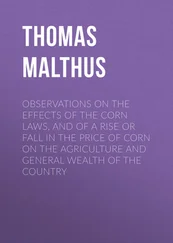In the short term, this risk may grow significantly along with the development of military hardware and changes to the strategic balance. For example, space weapons and cyber warfare are likely to have the ability to disable early warning systems or trigger false alarms. The proliferation of sea-based nuclear missiles poses the risk of provocative “anonymous” third-party attacks from underwater. The development of hypersonic systems will deprive ground-based radars of the ability to determine, in a timely manner, the trajectory of enemy missiles and their impact area, which means that a launch-on-warning response will have to be authorized immediately upon detection from satellites, which periodically signal false alarms.
Finally, the collapse of the INF Treaty and the possible deployment of new U.S. medium-range missiles in Europe and Asia will, due to their short flight time or low trajectory, neutralize the Russian concept of launch-on-warning, as there will simply be no time for its implementation during an attack. According to statements by authoritative military commanders, this might force Russia to accept the concept of a preemptive nuclear strike. 27It is clear that such a strike would be more destructive than a purely retaliatory strike, but in any case, the subsequent nuclear retaliation by the enemy would be fatal for Russia. And if the United States accepts the concept of a preemptive strike, any possible crisis situation would force both sides to speed ahead of the other: not for any political reasons, but because of the vulnerability of Russian strategic forces and command-and-control system to the first strike by the other side.
Another example of the self-destructive tendencies of nuclear deterrence is the concept of a limited or selective nuclear war. The perennial question that strategic planners have fought over for decades is what to do if nuclear deterrence fails. These scenarios include if an attack by an enemy using conventional weapons threatens imminent defeat (including destruction of nuclear forces in bases using high-precision non-nuclear capabilities), if the other side uses nuclear weapons in any kind of limited way, or if it uses other weapons of mass destruction or cyber attacks.
From the early 1970s, the United States—starting with then secretary of defense James Schlesinger—promoted the concept of “retargeting:” various options for selective and limited strikes against Soviet military targets. 28But all of these plans were dashed by the likelihood of a massive nuclear response by the Soviet Union, which categorically rejected such ideas and strengthened the potential for a “devastating retaliation.” 29
Changes began many years later. In 2003, in an official Ministry of Defense document, Russia announced plans for the “de-escalation of aggression [by] the threat to deliver or by the actual delivery of strikes of various intensity using conventional and (or) nuclear weapons.” As such, the document assumed the possibility of “dosed combat employment of selected components of the Strategic Deterrence Force.” 30
It should be noted that, since then, subsequent editions of Russian military doctrine and other official strategic documents have made no mention of such concepts. At the same time, the adopted doctrinal formulations do not exclude such actions, since they do not specify how Russia can “use nuclear weapons … in the event of aggression against the Russian Federation with the use of conventional weapons when the very existence of the state is in jeopardy.” 31Neither is it clear when and how exactly the existence of the state can be considered in jeopardy, and what level of damage to the enemy is interpreted as sufficient. 32The United States is not transparent about these points either, but officially allows for the possibility of a limited nuclear war.
Amid the current escalation of tensions, politicians and military experts in Russia and the West have renewed their focus on this concept. A number of publications by Russian military specialists (in active service) justify
“the limited nature of a first nuclear strike, which is designed not to harden, but rather to sober up an aggressor, to force it to halt its attack and move to negotiations. In the absence of the desired reaction, provision is made for increasing the mass of nuclear weapons brought to bear, both in quantitative terms as well as their energy emission (that is, destructive power). Therefore … a nuclear first strike by the Russian Federation could have a limited character.” 33
However, in his address to the Federation Council on March 1, 2018, Putin said: “Any use of nuclear weapons against Russia or its allies, weapons of small, medium, or any yield at all, will be considered as a nuclear attack on this country. Retaliation will be immediate, with all the attendant consequences.” 34Implicitly, this may mean that a limited nuclear war is not envisioned in Russian doctrine and planning either, but this important issue might benefit from an unequivocal official clarification.
The United States has included the concept of a limited nuclear war in its nuclear doctrine for many years in the form of “tailored nuclear options.” But in the 2018 Nuclear Posture Review, this topic took on a central role and became the main innovation of Trump’s nuclear strategy. The review states:
“Recent Russian statements on this evolving nuclear weapons doctrine appear to lower the threshold for Moscow’s first use of nuclear weapons. Russia demonstrates its perception of the advantage these systems provide through numerous exercises and statements. Correcting this mistaken Russian perception is a strategic imperative. To address these types of challenges and preserve deterrence stability, the United States will enhance the flexibility and range of its tailored deterrence options.” 35
For limited nuclear strikes, the plan is to equip part of the Trident-2 submarine-launched ballistic missiles (SLBMs) with low-yield warheads, as well as to develop long-range standoff (LRSO) air-launched missiles, guided bombs with variable yields (such as the B61-12) for tactical and strategic bombers, and new sea-launched cruise missiles with nuclear warheads. 36
No matter how much the deterrence doctrine is used to justify such capabilities and proposals, they actually reduce the nuclear threshold and increase the likelihood of any armed clash between the superpowers escalating into a nuclear conflict with a subsequent exchange of mass nuclear strikes.
Another controversial response to the question of what to do in the event that deterrence fails is the concept of damage limitation in a nuclear war. The recent U.S. Nuclear Posture Review says: “The goal of limiting damage if deterrence fails in a regional contingency calls for robust adaptive planning to defeat and defend against attacks, including missile defense and capabilities to locate, track, and target mobile systems of regional adversaries.” 37
Although this passage refers to regional adversaries, Russia sees itself as a target of these plans (likewise, it feels threatened by U.S. missile defenses and long-range high-precision conventional weapons). In a nuclear war, the desire to limit damage to one side by offensive operations looks like a threat of disarming strike to the opposite side, especially when it comes to destroying Russia’s highly survivable forces, which in the form of mobile ICBMs are associated mainly with the concept of “deep second strike”—the basis of the philosophy of strategic stability.
Another dangerous area in which the degradation of nuclear deterrence is happening is the development of a variety of long-range (over 500 kilometers) strike systems capable of delivering conventional warheads to targets that could previously only be destroyed with nuclear weapons. This has been made possible by new command-and-control information systems (including in space) and the miniaturization of electronics, which can significantly improve the accuracy of the guidance systems (allowing down to several meters of circular error probability). 38
Читать дальше












